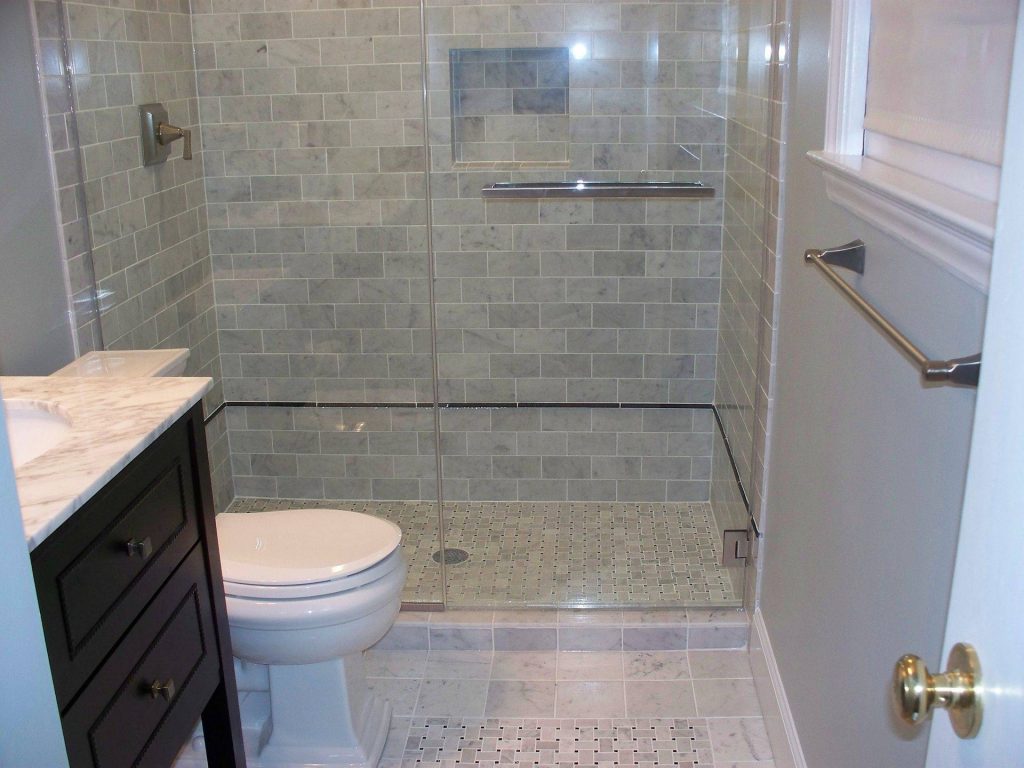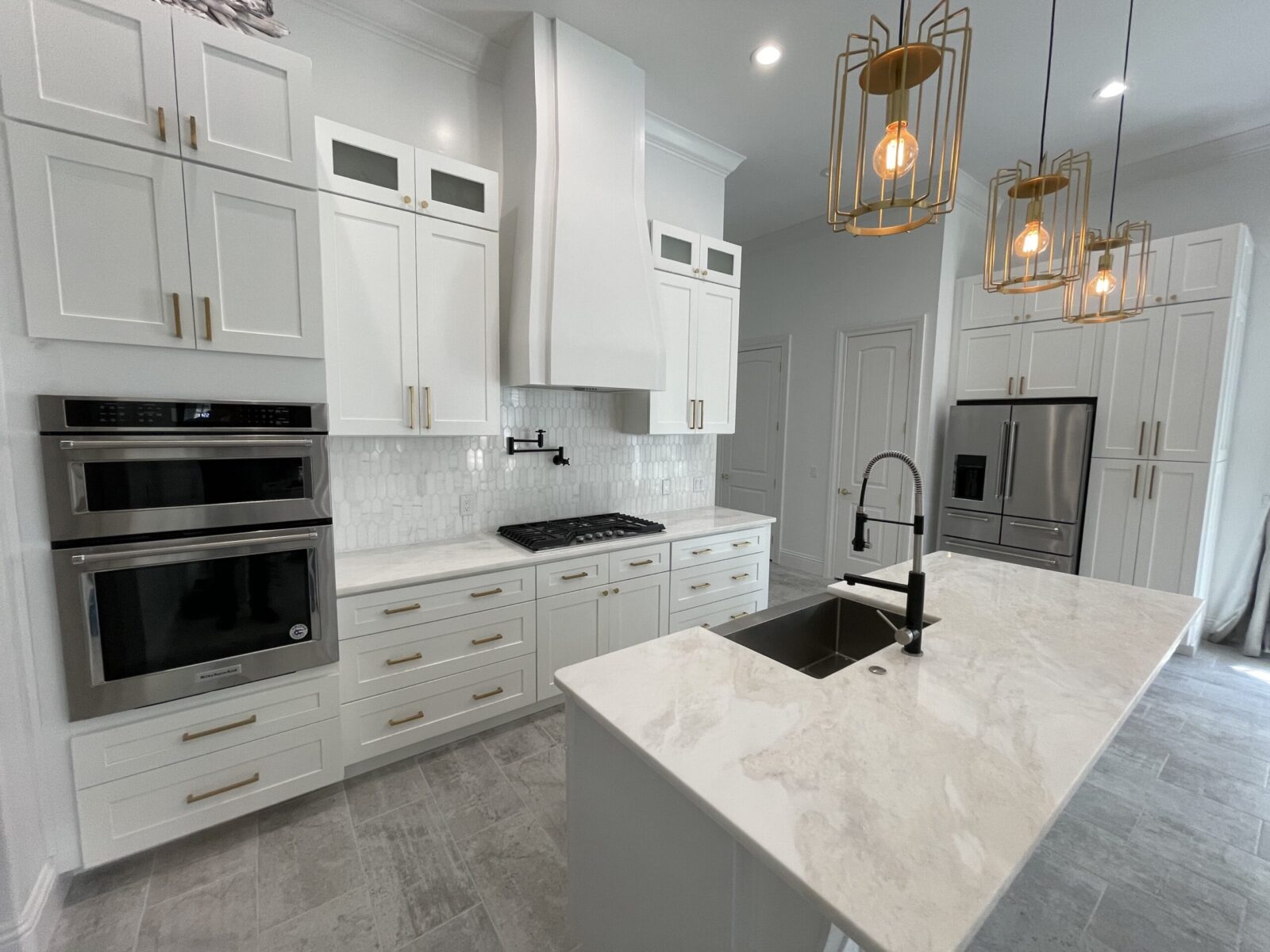
Ceramic Tile
Ceramic tile is a mixture of clays which have been shaped and fired at extremely high temperatures, resulting in a hard body. This hard body may then be left untreated, or it may receive a glazed wear layer. In its most basic form, ceramic tile is clay with colored glass coating packaged in a box.
Durability
To avoid choosing the wrong ceramic tile product, consult the following P.E.I. guide – used by most manufacturers – to rate the durability of each tile. (Note: the letters P.E.I. stand for Porcelain Enamel Institute)
- The P.E.I. ratings are derived from a combination of tests that not only address the physical wear of the glaze surface itself, but also include a visual wear of the glaze surface appearance after the test.
The wear ratings are normally listed on tile packaging labels & product literature.
Facts About the Clay Body
The clay body, called bisque, is made up of various types of clay and other minerals. Combined, these raw materials give the bisque its strength and stability.
Its density also determines the strength of the bisque as it relates to the water absorption level. The strongest bisques (those suited for heavy commercial installations) have the smallest and fewest number of air pockets which, in turn, will affect the overall water absorption, breaking strength, and impact resistance of the finished product. The density of the clay also determines whether or not the tile is suitable for outdoor use.
Tile density is measured by the amount of water it absorbs.
- Non-vitreous Tiles: Absorb 7% or more of its body weight in water. They are suited for indoor use only, and considered to be non-frost resistant.
- Semi-vitreous Tiles: Absorb between 3% to 7% of its body weight in water. They are suited for indoor use only, and considered to be non-frost resistant.
- Vitreous Tiles: Absorb between 0.5% to 3% of its body weight in water. They are suited for both interior and exterior applications (covered and/or non-heated rooms not exposed to standing water) and considered to be frost resistant.
- Impervious Tiles: These are the strongest tiles, and absorb between 0 and 0.5% of their weight in water. Suited for both interior and exterior use and considered to be frost resistant. (NOT FREEZE PROOF). However, be aware of the C.O.F. (stands for coefficient of friction and means the slip resistance factor) when deciding on the use of these types of tile products in exterior applications.

Porcelain Tile
Porcelain tiles are ceramic tiles with a water absorption rate of less than 0.5 percent that are used to cover floors and walls. They can either be unglazed or glazed..
The hardness of the tile is rated from zero to five according to the ASTM C1027 (or ISO 10545-7) test for surface abrasion resistance of glazed tile. This rating, (sometimes mistakenly called the PEI rating) determines the tile’s suitability for various end use conditions.
Large scale production of porcelain tile is undertaken in many countries, with the major producers being China, Spain, Italy, and Turkey.
Porcelain tile is also a very common trend in tile installation. There are many different styles of porcelain tiles on the market, and they have proved to outperform ceramic tile in durability and looks.

Granite Tile
Granite characteristics include strength and durability. This unique and elegant natural stone is one of the oldest, hardest, and strongest stones available. It is a truly beautiful natural stone with hundreds of colors and patterns to choose from. Granite symbolizes strength and longevity. The looks obtained from using this stone are versatile, from an unassuming elegance to a bold statement. There are hundreds of different granites available.

Marble Tile
Marble is simply beautiful and elegant. Nothing matches its stunning allure. Marble is stone that has been transformed from limestone. As marble ages, it picks up fossils, such as corals, and incorporates them into its final makeup.
Marble is quarried in large chunks, cut from the surrounding rock, and brought to mills where the stone product can be further processed. The largest slabs possible are sawn first, then cut into smaller slabs, and finally transformed into marble tiles. These tiles are cut in several sizes, most often 12 inches square and about a half inch thick.
Many varieties of marble tiles contain weaknesses called “faults.” Faults run through the stone in random directions and at times appear to be veining. Often, these imperfections are filled with tinted resins before the tiles receive their final polishing at the factory.
Some marble tiles are so inherently weak that fiberglass mesh is attached to their backs to strengthen them.
Marble tile is soft and it will scratch easily. It should not be used in areas of high traffic in the home. What starts out as a very elegant floor can become a dismal eyesore in very short order. Marble floors will also oxidize if not regularly cleaned and polished. Marble installed in practical spaces delivers a beautiful natural stone appearance .

Travertine Tile
Travertines are chalky, limestone-like rocks. Found in the earth’s crust, its unique look and qualities are derived from thermal springs of water which are forced up and through it by geological pressures. This water washes out any weaker materials, leaving the bubbly, miniature Swiss cheese look behind it. Sometimes, silica will collect and grow in the holes, which creates a crystal formation.
These stones are usually found with a honed finish in slabs, or a tumbled finish in small tiles. In larger travertine tiles, they may be tumbled or square cut. Sometimes, the voids are filled and then the tile is honed, but it is much more common to find the cavities left open to add texture and visual interest.
Travertine tile works very well for backsplashes and bathroom countertops, as well as tub decks or shower interiors. It’s not recommended for kitchen countertops, because it is slightly more fragile than granite and tends to stain more easily. Travertines get sealed, just like any other natural stone, and require re-sealing occasionally throughout their lifetimes.
Travertine tiles are usually found in colors like light cream, dark cocoa browns, yellow golds, and light greens. In short, travertine tiles usually (but not always) tend towards the neutral color zone.

Slate Tile
The use of slate tiles in interior design has become very popular in recent years. In kitchens, they’re frequently used for floors and backsplashes. In bathrooms, they’re typically used for floors, walls, and shower stalls. They’re also commonly used in foyers. One of the great things about slate is that it’s a natural material and can be used either indoors or outdoors.
Slate tiles come in many sizes, shades, and textures. They’re usually square and measure anywhere from 12 to 24 inches square. There are other sizes as well, but these are the most common.
The thickness of slate varies, but tiles are typically a quarter of an inch thick. They can however be larger, and can get as big as three quarters of an inch thick.
Slate is a fine grained metamorphic stone formed from clay mud, composed of sediments of decomposed stone and organic matter that has been hardened by heat and pressure. Since the geological process varies greatly, slates range quite a bit in hardness and porosity.
Slate characteristics vary with source. It may be black, green, or mottled, and is relatively dense. Many imported slates are available today with wide ranging physical characteristics and overall suitability. The stone differs in density, tensile strength, absorbency, and abrasion resistance.

Metal, Glass, and Mosaic Tile
Metal and glass tile are generally used in smaller spaces or incorporated as accents to provide highly extravagant decorative design. You can let your tile imagination run wild with these decorative design elements.
- Random rectangular glass and metal mosaic tiles mesh mounted on a 12-in x 12-in sheet
- Suitable for exterior walls in freezing and non-freezing climates when proper installation methods are followed
- Please inspect tile prior to installation as no adjustments will be allowed after installation
- Recommended grout joints: 1/8-in
- Recommended for residential walls and backsplashes
What Our Customers Are Saying
I had two bathrooms renovated by Seashore Tile and they did such great work that I had them come back to do a kitchen remodel. They are very responsive to client needs and a pleasure to work with. They keep things on schedule and on budget. I was very impressed with the quality and craftsmanship of their work. Would not hesitate to recommend this company!
Seashore Tile did a complete remodel of our kitchen and two bathrooms. They also laid our bamboo flooring through out home, replaced all the baseboards, and replaced all interior doors. They were always on schedule, did a wonderful job, and were always accommodating with any issues. We highly recommend them. We get rave reviews from our friends who have seen our new home
Truly amazing experience from beginning to the end! They worked on our entire house including interior and exterior painting and complete kitchen renovation turned out amazing such a great company five stars no doubt!

Complete the form below to get a FREE Quote
"*" indicates required fields